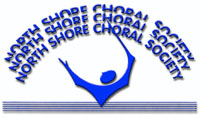 |
NSCS 1999-2000 Concert Season |
Sunday, March 12, 2000 at 4 PM North Shore Center for the Performing Arts Rabbi Shlomo Schuster, narrator Skokie Valley Symphony Orchestra and NSCS join to present
this
King David
9501 Skokie Boulevard, Skokie, IL
Sunny Joy Langton, soprano
Theresa Brancaccio, mezzo soprano
Kurt Hansen, tenor
masterwork. Based on a play by Ren/ Morax, this exciting
symphonic drama recounts the life of King David. It calls for a large
performing force: chorus, full orchestra, three soloists, and two narrators.
Program Notes for the MARCH 12, 2000 CONCERT
Don Draganski
Arthur Honegger was born of Swiss parents in Le Havre, France, on
March 10, 1892. He received his musical education in Paris and Zurich; although
he participated actively in the music life of Paris throughout his professional
career, he considered Switzerland his home and maintained a life-long residence
in that country. He died after an extended illness on November 27, 1955.
Honegger began composing while still in his teens, and by the time he was
twenty-six he had already established himself as an important new voice in
European music with his masque Le Dit des jeux du monde. His association
with a group of young musical rebels in Paris in 1920 led to the formation of a
loosely-organized band of composers who called themselves "Les Six," consisting
of Honegger, Darius Milhaud, Francis Poulenc, Georges Auric, Louis Durey and
Germaine Tailleferre.
Honegger composed extensively - and successfully - in all genres. Some of his
better-known works include the popular orchestral piece Pacific 231, the
operas Judith and Antigone, the oratorio Joan of Arc at the Stake,
and the Symphonie Liturgique.
***
Honegger's first large-scale work that won him almost, instant international acclaim was King David (Le Roi David) composed in 1921. It is marked by violent contrasts, primitive rhythms standing side by side with Baroque-sounding chorales. Indeed, Honegger had little concern for purity of style, and he never hesitated to incorporate material that a more timid composer might have shunned as incongruous; if an idea might propel the drama and excitement of a work, he adapted and incorporated it into the overall scheme of the composition. Honegger's essential aim, he wrote, was to function as "an honest workman to produce an honest piece of work." The following comments, excerpted from a longer statement which Honegger wrote in 1951, recounts the origins of King David:
"In the early part of 1921, René Morax asked me to write the music for a new drama to be staged at the end of May: King David. The subject was immediately enticing, for I found myself developing into a Biblical composer; and, without stopping to evaluate the importance of the project, l accepted with delight.
"I was young and very eager, and so, by making an effort that seemed to be only too natural, I came to write the score between the 25th of February and the 23rd of April. In order to gain time, I sent each section to the publisher as I completed it. In this way, the chorus could begin rehearsal without any delay. The orchestra presented a problem, for I was only allowed seventeen instrumentalists with which to balance a large chorus. In discussing this with Stravinsky, he gave me some very good advice: 'Imagine that you yourself wanted this arrangement of seventeen musicians.' I followed his advice and scored for the following: one double bass, two flutes, one oboe, two clarinets, one bassoon, two trumpets, one French horn, piano, harmonium and celeste."
The success of the stage production prompted Honegger to expand and recast the
musical material into an oratorio. He subsequently scored the work for a full
orchestra, the version used in this performance. To continue Honegger's
remarks:
"To make the work more suitable for concert performance, René Morax hit upon the idea of binding the separate numbers together by means of a narrator who explains the action. This facilitated comprehension and made the meaning of each section clear.
"I have been accused of disunity for writing in two opposing styles. Nevertheless, I maintain that in King David I intentionally created this antagonism; in doing so I followed the painters who also sought for contrasts between the decorations and costumes of the Hebrews and those of the Philistines. For me the entire section of archaic Judah is treated in a rude and colored language, whereas the Alleluias and the final Chorale are in that Protestant tradition of J. S. Bach that is for me representative of the music of Christianity. The contrasts are therefore planned and intentional."
Honegger kept very close to the Biblical account of David's life
which begins in chapter 16 of the First Book of Samuel. The chronicle of
David's exploits, including his famous confrontation with Goliath, makes up the
remainder of this book as well as the entire Second Book of Samuel. David's
death and the handing over the reins of power to his son Solomon occur in the
opening pages of the First Book of Kings.
Honegger greatly relished the poetry and drama of these Old Testament pages. As
they passed through his musical imagination, they inspired a setting of rare
power and variety, making in King David one of the most successful
choral works of this century. Let us join with the French musicologist José
Bruyr and "thank Honegger for having in his youth given us this work so
beautiful in its intensity, lyricism and faith."
© 1999-2003 - North Shore Choral Society
P.O. Box 103
Evanston IL 60204-0103